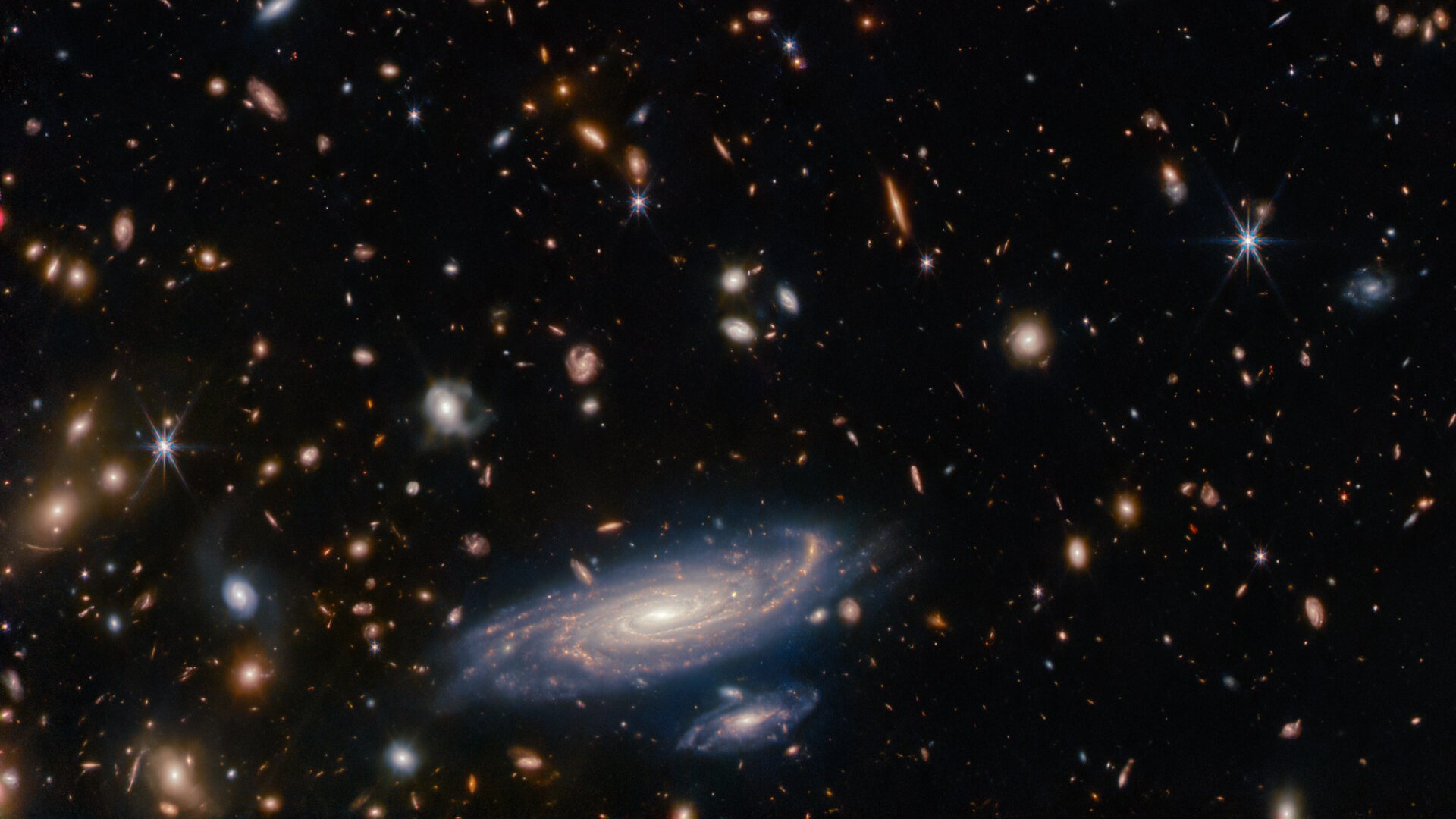This James Webb Space Telescope image shows spiral galaxy in stunning detail
A newly released image from NASA's James Webb Space Telescope shows a crowded field of galaxies and stars, with a distant spiral galaxy standing out in stunning detail.
The large galaxy that sits at the bottom of the image, LEDA 2046648, is so clear in the James Webb Space Telescope (JWST or Webb) image that its individual spiral arms are visible. This level of detail is even more impressive considering that the galaxy in question, which is in the constellation of Hercules, is more than 1 billion light-years away from Earth and JWST.
This particular image also shows a host of other galaxies and stars, all marked by the six-pointed diffraction spikes that are a signature of JWST observations. The image was captured by JWST's Near-InfraRed Camera (NIRCam) while the telescope was observing the white dwarf WD1657+343, a well-studied object that JWST was observing in order to calibrate its Near-Infrared Imager and Slitless Spectrograph (NIRISS).
Related: James Webb Space Telescope's best images of all time (gallery)

(The image, released on Tuesday (Jan. 31), presumably comes from before Jan. 15, when NIRISS experienced a glitch that took the instrument out of commission. NIRISS resumed normal operations on Monday (Jan. 30), NASA officials said.)
Not only are the other galaxies in the image smaller than LEDA 2046648, but some of them are also more distant, offering a deeper view of the universe's history. One of the main aims of JWST is to observe distant galaxies, some located much further away than LEDA 2046648, in order to look back in time at the universe when it was in its infancy.
This historical insight is possible because light takes a finite time to travel to Earth from distant galaxies, so looking at these galaxies is akin to seeing them at the time when the light left, sometimes as early in the 13.8-billion-year history of the cosmos as around 300 million years after the Big Bang.
Get the Space.com Newsletter
Breaking space news, the latest updates on rocket launches, skywatching events and more!
Light from these galaxies doesn't remain unchanged over the course of its many-billion-year journey to the 21-foot-wide (6.5 meters) gold-plated primary mirror of JWST, however.
The expansion of the universe stretches the wavelengths of this light, reducing its energy from the visible spectrum to infrared light. This process is known as "redshift," as it moves light toward the red end of the electromagnetic spectrum.
The phenomenon makes JWST's infrared-detecting capabilities ideal for studying the red-shifted light from ancient galaxies, and thus for identifying details of their formation, evolution and composition.
Astronomers can then compare the structure of these distant ancient galaxies to those we see closer to our own galactic home, the Milky Way, that exist in a more contemporary epoch of the universe.
The comparison could help to reveal how galaxies grew to form the structure we see in the universe today. Additionally, the light from distant galaxies helps reveal their chemical composition, showing astronomers how and when heavy elements formed and how they have become more abundant in later galaxies thanks to enrichment from exploding stars.
Follow us on Twitter @Spacedotcom or on Facebook.
Join our Space Forums to keep talking space on the latest missions, night sky and more! And if you have a news tip, correction or comment, let us know at: community@space.com.

Robert Lea is a science journalist in the U.K. whose articles have been published in Physics World, New Scientist, Astronomy Magazine, All About Space, Newsweek and ZME Science. He also writes about science communication for Elsevier and the European Journal of Physics. Rob holds a bachelor of science degree in physics and astronomy from the U.K.’s Open University. Follow him on Twitter @sciencef1rst.
-
ecky thump We will never understand the Universe, so lets sit back and enjoy all these images and videos.Reply
